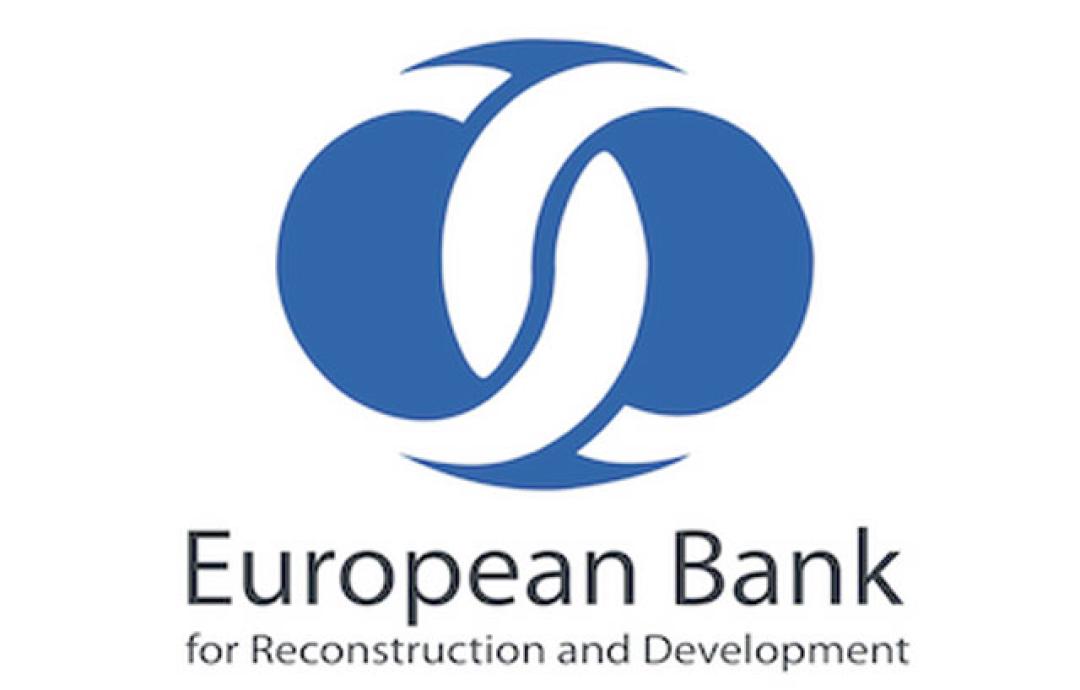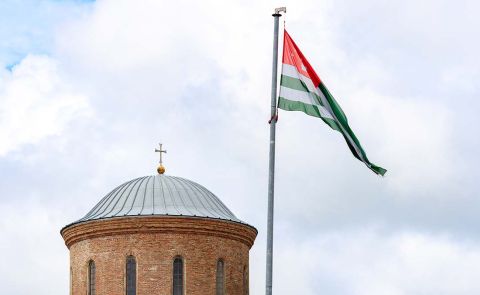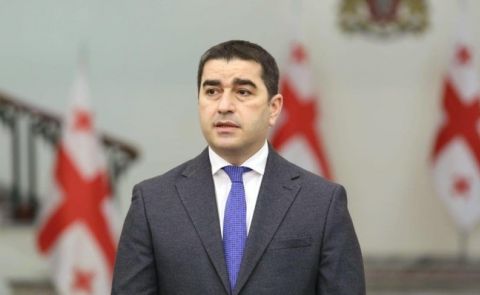
South Caucasus countries in the EBRD transition report 2019-2020

On 19 November, the European Bank for Reconstruction and Development (EBRD) published their Transition report 2019-2020 which outlined how good governance is important for economic growth, quality of life and the natural environment. The report also contained individual studies on Armenia, Azerbaijan and Georgia, highlighting the trends and prognosis for their respective economic growth.
For Armenia, the report stated that strong GDP growth continued despite a slowdown in exports, that the new government is targeting higher and inclusive growth, and that the Armenian authorities have adopted a package of tax reforms. Reporting on the macroeconomic indicators in the country, the report stated that the economy maintained a robust growth despite a slowdown in exports. In the first half of 2018, the economy expanded by a strong 8.7 percent year-on-year. However, a contraction in the agriculture sector, traditionally the largest sector of the economy, and the mining and quarrying sectors, the strongest contributors to export growth, led to a growth slowdown in the second half of the year. From a production perspective, the arts, entertainment and recreation sectors were the main contributor to growth, expanding by 31.5 percent in real terms.
In light of slower export growth, healthy domestic demand led to the widening of the current account deficit. Weighed down by underperformance in the mining sector, the growth of export receipts decelerated to 9.0 percent in 2018 from 23.2 percent a year earlier. At the same time, imports increased by 16.1 percent in nominal US dollar terms. This led to the trade deficit widening by more than three times compared with the previous year and moved the current account deficit to a nearly double-digit level (as a percent of GDP). The current account deficit levelled off in the first half of 2019. Nevertheless, the Armenian dram remains stable, financed largely by the inflow of foreign currency and deposits to the banking sector in the same period. Inflation declined from 2.5 percent in 2018 to 1.6 percent in the first nine months of 2019 (0.5 per cent in September) affected by the contractionary fiscal policy and stable exchange rate.
The fiscal balances also improved in the country. After reaching nearly 60.0 percent of GDP, the public debt to GDP ratio decreased by approximately three percentage points in 2018 compared with a year before and stood at 55.7 percent at the end of 2018. This reflected favourable macroeconomic developments, including strong GDP growth and fiscal consolidation. The lower-than-planned fiscal deficit in 2018 at 1.6 percent of GDP was underpinned by strong tax administration efforts and government underspending on the back of delays in both current and foreign-financed capital expenditure. In the first six months of 2019, the fiscal balance was in surplus, at 1.9 percent of forecasted GDP.
Real GDP is forecast to grow by 6.0 percent in 2019 and by 5.0 percent in 2020. The EBRD recommended for the year 2020 that the Armenian government puts more efforts to tackle corruption, strengthen competition, foster transparency and ensure a level playing field need to continue; to enhance tax compliance; and to address infrastructure bottlenecks.
For Azerbaijan, the report stated that the economy is strengthening, the authorities undertook important fiscal reforms, and that steps were taken to decrease the stock of non-performing loans (NPLs) in the banking sector. In regard to the country’s macroeconomic indicators, it stated that the output growth is gradually strengthening. Following a near-stagnation in 2017, GDP grew by 1.4 percent in 2018. On the production side, transport, manufacturing, agriculture and retail trade were the main contributors to growth in 2018. Growth was supported by the ongoing expansion of hydrocarbon production and export capacity; real output in the oil and gas sector recovered from a 5.3 percent contraction in 2017 to a 0.5 percent expansion in 2018. In contrast, the construction sector was the main drag on overall economic performance, contracting by an estimated 9.0 percent.
The external surplus widened while the fiscal balance turned into a surplus on the back of higher hydrocarbon revenues. The current account surplus rose from 4.1 percent of GDP in 2017 to 12.9 percent in 2018 on the back of increased hydrocarbon exports and favourable commodity prices. In the first half of 2019, this trend halted on the back of weak exports of services combined with a near stagnation in the oil and gas sector balance in comparison to the same period last year. The consolidated budget moved from a deficit of 1.4 percent of GDP in 2017 to a 5.6 percent surplus in 2018.
The credit activity started recovering but weaknesses in the financial sector remained. The loan portfolio stopped contracting in 2018 and started to gradually increase in nominal terms at the end of the year amid overall macroeconomic stabilisation and the resumption of economic growth. However, the ratio of private credit to GDP, at 16.3 per cent in 2018, is low by regional standards. Loan and deposit dollarisation has been declining, but remains high at 34.3 percent and 63.0 percent respectively as of August 2019. The share of overdue loans as defined by the Central Bank of the Republic of Azerbaijan (CBA) has dropped in the past two years but, at 10.8 percent, is still significant.
The EBRD forecasted that the Georgian economy would grow by 2.8 percent in 2019 and 2.4 percent in 2020. It recommended that the Azerbaijani further implement the recent fiscal reforms; that the banking sector reform remained incomplete and should be reinvigorated; and that the government should adopt policies that support private sector development and economic diversification.
As for Georgia, the report highlighted that economic growth remained strong, that the fiscal framework improved, and that important structural reforms were advanced. From a macroeconomic perspective, the economic output increased by 4.7 percent in 2018. The growth was broad-based; all sectors expanded, apart from construction. Trade was up by nearly 6.0 percent, followed by real estate, transport, financial intermediation and other sectors, such as social and personal service activities. The negative growth rate in the construction sector is largely explained by delays in public infrastructure spending and completion of the landmark gas pipeline project. Tourism continued to boom. Gross domestic product (GDP) grew by an estimated 4.7 percent year-on-year in the first half of 2019. Exports of goods in nominal US dollar terms increased by 11.5 percent year-on-year in the first half of 2019, down from 22.7 percent growth in 2018.
The inflow of foreign direct investments decelerated after reaching a peak in 2017. The current account deficit shrank further in 2018 on the back of thriving tourism and a strong increase in the exports of goods, benefiting from ongoing geographical diversification as the network of free trade agreements grew. At the same time, following an all-time high in 2017, foreign direct investment (FDI) into Georgia decreased by 35.3 percent in 2018, hitting a five-year low. The drop is mainly explained by the completion of the South Caucasus Pipeline Expansion (the gas pipeline connecting Azerbaijan and Turkey), the transfer of several enterprises to domestic ownership and debt repayments between connected companies.
The report also stated that the Georgian Lari came under renewed pressure following a deterioration in Georgian-Russian relations in mid-2019 and coupled with domestic political uncertainties, leading to a currency depreciation of more than 9.0 percent in the first nine months of 2019. Inflation has risen from 2.6 percent in 2018 to 6.4 percent in September 2019 due to pass-through from nominal exchange rate depreciation and the increase in excise taxes earlier in the year. This prompted the National Bank of Georgia (NBG) to intervene on the foreign exchange market and raise the monetary policy rate by 200 basis points to 8.5 percent in October. Official international reserves increased by 9.5 percent since the beginning of 2019 and stood at US$ 3.6 billion in August 2019, providing around four months of import coverage.
The EBRD forecasts that Georgia’s real GDP will grow by 4.5 percent in both 2019 and 2020. It recommended that the Georgian government should improve governance standards; to further implement multimodal infrastructure development projects; and to introduce a comprehensive reform of the education sector in order to address the labour market shortcomings.
See Also


Moscow’s Plan in Separatist Abkhazia Focuses on Naval Logistics, Not Base Establishment

Kobakhidze Announces Full Enforcement of Georgia’s Foreign Agents Law

Kobakhidze Meets US Senator Daines to Discuss Bilateral Relations

Georgian Speaker Condemns Embassy Travel Warnings as Economic Attack

